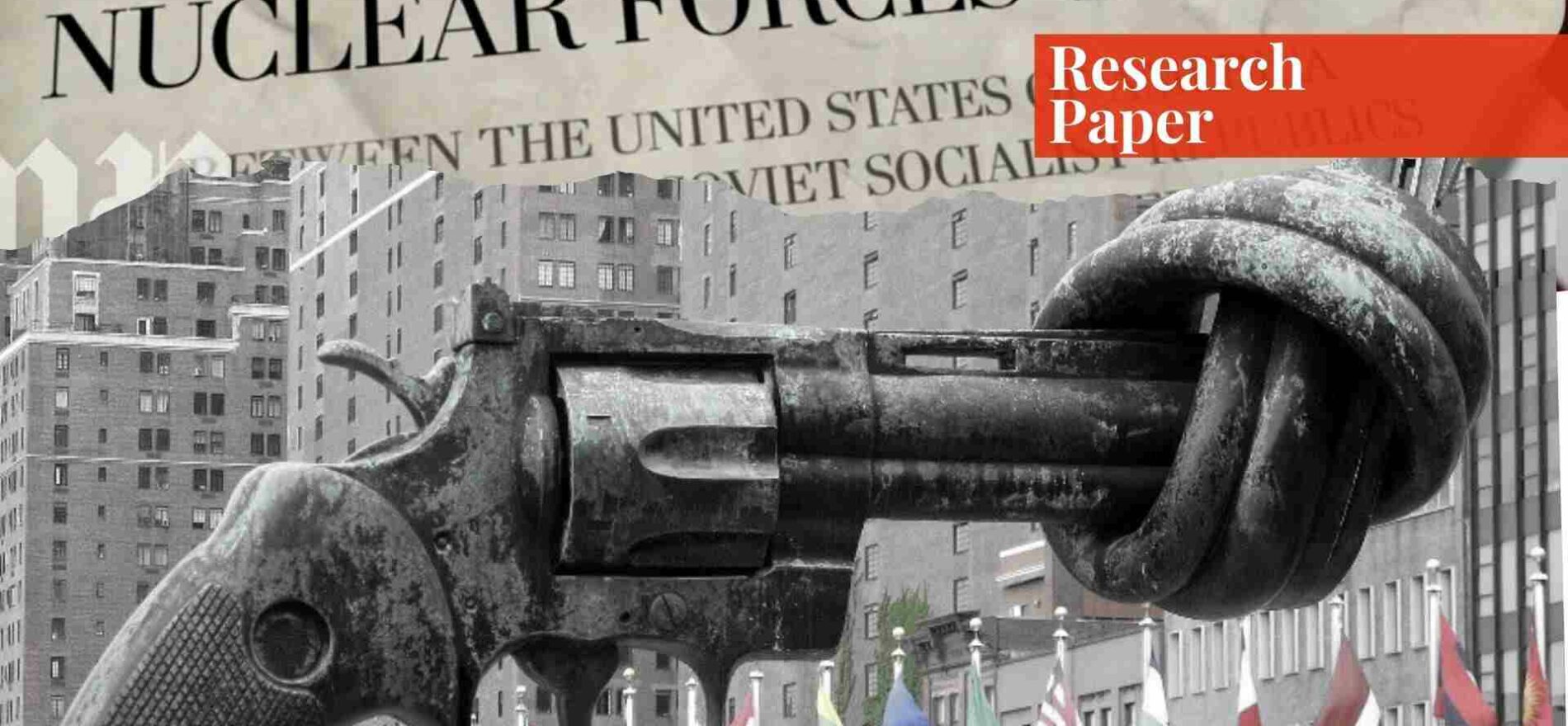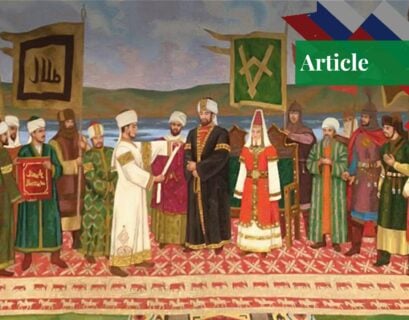Introduction
Since the end of the Second World War and in the early years of the Cold War, arms control regimes have emerged as a means to limit the security dilemma and to reign in the balance of power politics faced primarily by the major powers of that time, namely the United States of America (US) and the former Soviet Union (USSR). Such regimes have now expanded to include a wide range of states in the international system in an attempt to cap and limit the proliferation, production, and stockpiling of weapons of mass destruction including both nuclear and conventional weapons.
An important tool to assess the viability of arms control agreements lies in their verification and monitoring programs, which can range from on-site inspections to aerial and satellite surveillance, data exchange, and use of National Technical Means (NTM).
However, technical and political challenges such as apparent breaching of state sovereignty, changing geopolitical conditions and subsequent mistrust, lack of universal participation, rapid technological advancements, and the problem of dual-use military technology have posed significant challenges to verification in arms control agreements.
On the other hand, it is important to note that prospects for such verification and monitoring regimes do exist and should be strengthened including Confidence Building Measures and diplomatic pursuit, innovating verification technologies, and increasing transparency between states.
One such arms control agreement renowned for its verification and monitoring protocol is the Intermediate-Range Nuclear Forces (INF) treaty between the US and USSR that entered into force on 1st June 1988. The INF treaty’s objective was to eliminate all land-based ballistic and cruise missiles with ranges between 500 and 5,500 kilometers.
Although since suspended, it has emerged as an innovative and cardinal agreement, serving as an example for future treaties like the START I and CFE due to its extensive verification and data exchange mechanisms that included on-site, baseline, closeout as well as short notice inspections. This treaty was a massive success as it eliminated an entire class of intermediate-range nuclear weapons by the US and USSR in the three years after it entered into force, and proved to the world that future arms control negotiations can be deemed possible courtesy of robust verification and monitoring regimes.
Challenges in Verification and Monitoring
Within arms control agreements, verification is defined as “a tool to strengthen international security. It involves the collection, collation, and analysis of information to make a judgment as to whether a party is complying with its obligations.”1 Verification aims to pinpoint non-compliers to a treaty, monitoring on the other hand is the process or the tool being used to ensure verification itself.
Monitoring can be carried out from a distance to cover a wide area, such as through aerial monitoring, or from a proximity for example through on-site inspections of certain sites. Verification and monitoring are essential since they not only help to detect violations of arms control agreements but also aim to build domestic and international confidence towards the viability of arms control agreements. However, in the current age, many challenges in verification and monitoring regimes have emerged that demand resolution.
Geopolitical Tensions and Mistrust
An important political challenge arises in the form of existing geopolitical tensions and mistrust between states party to the treaty. Historical conflicts, territorial disputes, and differences in ideologies between nations contribute to an atmosphere of mistrust between states which hampers verification and monitoring regimes in arms control agreements.
One example of such an instance can be seen in the Six-Party talks initiated in 2003 involving North Korea, South Korea, the United States, Russia, China, and Japan. It aimed to negotiate a peaceful resolution to North Korea’s nuclear weapons program; however, North Korea’s resentment of the US and South Korea, courtesy of the Korean War, resulted in reluctance on the country’s part to fully disclose its nuclear assets and allow for comprehensive inspections to ensure verification of dismantling its nuclear weapons. The talks therefore ended in 2009 following North Korea’s withdrawal.2
Transparency vs Security
Comprehensive monitoring and verification can only take place if the states involved allow extensive on-site inspections, aerial and satellite surveillance, disclosure of sensitive sites and bases, and the number of weapons owned. However, this means intrusion of a country’s closely guarded national security secrets as well. This raises a debate over whether intrusive verification regimes threaten the national sovereignty of states.
According to a report on US-Russia arms control agreements by the Stockholm International Peace Research Institute (SIPRI), 91% of the US verification procedures proposed in arms control agreements involve some type of ‘intrusive’ verification regimes, the gormer Soviet Union’s proposal however contained both intrusive and non-intrusive methods in equal proportion.3
This information is essentially reserved to verify agreement compliance, but it could in the future be used to aid military intelligence and espionage, and inspecting states could collect vulnerabilities of the opponent that could be used against the country in periods of conflict. This poses a trade-off between transparency in verification and national security.
Dual Use technology
Dual-use military technology involves technology that can be used for both military and commercial purposes. This can pose a significant threat to the verification and monitoring regimes as civilian technology such as the use of uranium enrichment technology for nuclear power generation can also be used for fissile material production in the military sphere. This has been witnessed in the Iran nuclear program in the past where contrary to Iranian claims of enrichment of uranium for peaceful purposes, the country was accused of enriching uranium for nuclear weapons.4
Similarly, rapid technological advancements also intensify the dilemma as they can outstrip the ability of the arms control agreements to adapt and address the emerging dual-use technologies. A case in point could be 3D printing machines and their potential for producing military components such as drone parts and small arms.
Ambiguities in Agreements
Since arms control agreements involve complex technical details and jargon, ambiguities can emerge when it comes to their interpretation. Loopholes can be identified, thus giving rise to chances of violating the agreements without formally breaching them. This was seen in the Strategic Arms Reduction Treaty (START I) where ambiguities emerged regarding the rules for counting delivery systems such as Intercontinental Ballistic Missiles (ICBMs), Submarine Launched Cruise Missiles (SLCMs), and the counting mechanisms for the number of warheads on Multiple Independently Targetable Reentry Vehicles (MIRV).
Moreover, defining heavy bombers became a source of contestation as questions arose about whether certain aircraft should be counted under the treaty limitations.5
Change in Political Leadership and Policies
Changing foreign policies and beliefs of political leaders means that arms control agreements and their verification and monitoring mechanisms undergo frequent fluctuations and uncertainties. Skepticism by new governments regarding the applicability of agreements made by predecessors can result in the renegotiation of existing treaties or the ratification of treaties altogether.
This political skepticism proved to be the very reason that the Trump administration withdrew from the Open Skies Treaty in 2020. Concerns about Russian non-compliance to the treaty, the Republican’s preference for direct bilateral treaties over multilateral ones, and the belief held by the Trump administration that the treaty did not serve US national security interests eventually contributed to the US’s withdrawal.6 It is therefore imperative that these challenges be effectively addressed for the effective implementation of verification and monitoring regimes within arms control agreements.
Case Study of the INF Treaty
The INF treaty was one of the first kinds of arms control agreements to eliminate an entire category of nuclear and conventional ground-launched ballistic and cruise missiles with ranges of 500-5,000 kilometers. The INF talks began in October 1981. They continued for six years until the negotiations proved successful and led to the signing of the treaty by US President Ronald Reagan and Soviet General Secretary Mikhail Gorbachev on 8th December 1987. The treaty entered into force on June 1, 1988, and within three years the two superpowers had destroyed nearly 2,692 INF missiles.
Success of the INF Treaty
To eliminate all treaty-prohibited items and assess compliance with the treaty, extensive monitoring and verification mechanisms were employed. Despite the bitter rivalry of the superpowers, they negotiated a treaty with each party sharing confidential data regarding deployed and non-deployed missiles, launchers, associated equipment, and the precise locations of these items along with all the sites eligible for inspection.
These items were listed in the Memorandum of Understanding (MOU) according to which, the US had 2,332 treaty-prohibited items located at 31 current and former INF missile sites and facilities, whereas 130 INF missile sites were home to the Soviet Union’s 5,439 treaty-limited items.7
The success of the treaty is credited to five types of invasive inspections that the parties conducted to ensure all weapons were eliminated by the implementation deadline of the treaty. These inspections required the United States and the Soviet Union to prepare INF inspection teams, arrange transportation facilities, and prepare accommodations for inspection teams. For example, during baseline inspections which began on July, 1st 1988, the Soviet and the American inspection teams had to visit 31 and 130 INF missile sites respectively within 90 days for which each inspected party had to prepare the missile sites, arrange transportation and logistics for the inspecting team.
Similarly, in short-notice inspections, the inspecting teams had to be transported to INF sites or facilities within 9 hours of the INF team chief declaring that the team would be undertaking an on-site inspection. Therefore, it was pertinent for parties to have aircraft on standby to facilitate the transportation of the inspection teams. Moreover, the INF treaty was one-of-a-kind in that it allowed each party to place up to 30 inspectors at any INF assembly plant or production facility to subject that facility to 24-hour surveillance.
The US sent inspectors to Votkinsk, a facility where the Soviet’s three INF missiles namely, the SS-12s, SS-20s, and SS-23s were assembled, whereas the Soviet Union dispatched inspectors to Magna, Utah, the site of a former Pershing II production plant. These inspections were called continuous portal monitoring inspections and required both parties to construct operations monitoring buildings and make residential arrangements for the inspecting teams.
Furthermore, an inspecting party had been given the right to be present while the inspected party eliminated its short and intermediate-range missiles and launchers. Elimination deadlines varied for short and intermediate-range missiles. Both the USSR and the US complied with the deadlines and the Soviet Union eliminated 1864 INF missiles, launchers, and associated equipment in eight facilities located within the Soviet Union, while the US utilized 3 facilities within the US and one in West Germany to eliminate 864 INF missiles, launchers, and associated equipment. By May 1991, the last of the elimination inspections were conducted.8
Finally, in the fifth type of inspections, INF facilities that had been declared eliminated were subject to inspections to assess the state of that facility. After the inspections, the facility was declared closed, but if a party chose not to exercise this right, the facility was considered closed after 60 days had passed. The closeout inspections were completed by August 1991.
Withdrawal From the Treaty
A few years after the turn of the twentieth century, the treaty began to lose its relevance and its limitations came to light as the geopolitical landscape changed. One of the major reasons for the decline of the treaty was the expiration of its monitoring and verification regime on 31st May 2001. With the cessation of all verification mechanisms, states could covertly develop treaty-banned missiles ultimately contributing to mistrust to aggravate.
States no longer felt the need to oblige to the treaty knowing that there would be no inspections to verify their compliance. Russia, for example, began to develop and test three missile systems namely the SS-25 ballistic missile, the Yars-M intermediate-range missile, and the RS-26 Rubezh which is an intermediate-range missile according to the claims of the United States.
Russia also accused the US of violation of the accord citing the development of the Long-Range Air Launch Target (LRALT) missile and the Medium Range Target (MRT) missiles with a range of 2,000 km and 1,100 km respectively.9 These developments occurred after the verification regime’s expiration therefore, it can be concluded that the treaty itself had become ineffective when its verification regime was not renewed.
As Amy J. Nelson stated “The more access and information a treaty provides, the less likely states will be to withdraw. The INF Treaty lost this value when its verification provisions expired three years after entry into force.”10 Moreover, geopolitical tensions were exacerbated due to the development and deployment of short and intermediate-range nuclear and conventional missiles by regional powers such as China, India, Iran, North Korea, and Pakistan.11
Perturbed by the development of missiles that were prohibited to them under the treaty, Russia and the US were forced to reflect on the utility of the treaty and consequently concluded that remaining party to an arms control treaty that prohibits the development of certain nuclear and conventional weapons was not in their best interests.
The beliefs of political leaders also play a role in compliance with a treaty. It was during Trump’s presidency when the US withdrew from not only the INF but also the Open Skies and the Joint Comprehensive Plan of Action (JCPOA). Trump is of the view that arms control agreements shackle the United States’ “freedom of action.” President Trump’s goal was to restore America to its former glory as is evident from his presidential slogan of “Make America Great Again (MAGA)” which points to a golden period of American history, particularly after the Cold War.
Achieving this vision of an ideal America called for maintaining its status as the sole superpower and not allowing global contenders to surpass it in any aspect. Thus, it should come as no surprise that Trump has been quoted saying that it is unfair that the US is prohibited from developing weapons that China and Russia have been acquiring and has boasted about how the US military could “play with” billions of dollars to build new nuclear weapons.12
It was during Trump’s presidency when the US formally withdrew from the INF treaty on 2nd August 2019. Though the treaty was a huge success in its time, and its verification and monitoring regimes continue to inspire new arms control agreements, lessons can be learned from the gradual decline of the treaty. Future arms control agreements should be flexible and take into account the changing geopolitical landscape of the world and emerging technologies.
Moreover, these agreements must include major and emerging powers rather than focusing solely on maintaining strategic equilibrium between Russia and the US. Finally, treaties of lengthy durations should design a verification and monitoring regime that continues throughout the lifespan of the treaty to maintain trust and confidence between the party states.13
Lessons to Learn from the Treaty’s Success
The implementation process of the treaty was no easy task. As one would expect with such intensive on-site inspections, issues could arise for which the INF treaty technical talks were held to address issues associated with on-site inspections. The states were required to continuously share notifications regarding INF matters through Nuclear Risk Reduction Centers (NRRC) which included data regarding flight plans, aircrew list, arrival time of inspection teams, list of the inspectors, and also included data listed in the MOU.
What states can take away from the success of the INF treaty is not just its robust verification methods but the willingness of two states to put aside their rivalry and negotiate a disarmament treaty to reduce the likelihood of a nuclear escalation. The two states had been engaged in a serious geopolitical competition since 1945 that saw them supporting proxy wars against each other and a near nuclear confrontation in the 1964 Cuban missile crisis, yet the states recognized the need to reduce the security threats their nuclear and conventional forces posed.
The six-year-long negotiations that led to the signing of the treaty and the international talks to discuss implementation issues showcase the effectiveness of diplomatic talks. In all, the robust verification and monitoring programs of the INF Treaty are testaments to its success.
Improving Future Arms Control Agreements
Firstly, the development of technological capabilities for verification is one important prospect. Monitoring mechanisms can be made significantly more efficient and accurate by incorporating cutting-edge technologies like artificial intelligence, sophisticated sensors, and enhanced satellite imagery. For example, AI can be utilized in the analysis of satellite and drone images; an AI model was trained by analysts to recognize functioning nuclear facilities.14
Moreover, there is room for improvement in terms of devising treaties that can withstand the test of time. Treaties are devised for a specific security situation arising in a specific time and if the treaties can achieve their objectives, and their verification and monitoring regime expires, they are eventually put on the shelf. In the INF treaty’s case, on-site inspections ended 13 years after the treaty entered into force.
Assuming that trust would be permanently developed and that signatories would not violate it was a faulty and detrimental presumption. It is therefore suggested that future arms control agreements not put a cap on on-site inspections. Furthermore, as it has been previously stated, treaties need to be adaptable, flexible, and open to modernization. The case study shows that the INF treaty managed to create strategic stability between the US and the USSR, but the issue of strategic stability at the regional level remained.
Prospects for improvement also include strengthening the institutions created within arms control agreements and conducting regular review conferences. The Special Verification Commission (SVC) of the INF treaty served as an implementation body for increasing the “viability and effectiveness”, but in case of a violation, the SVC had to be convened by a party to raise the issue of non-compliance. Increasing the power of bodies created under treaties would allow them to facilitate diplomatic efforts to address states’ concerns before the situation escalates.
If a state is suspected of violations, the institution could call for immediate inspections and impose penalties for violations. Another prospect is to increase public awareness and engagement in arms control matters. Providing forums for well-informed public discussion on arms control agreements, the necessity of strategic equilibrium and the dangers posed by proliferation of nuclear weapons and consequently, the threat of escalation, will create a sense of shared accountability and responsibility. The general public can guarantee that arms control initiatives are accountable, transparent, and in line with national security goals. Public support can enhance the success of arms control by serving as a catalyst for political will and persistent dedication to the verification and monitoring procedures. As the case study of the INF Treaty illustrates, technological advancements, flexible and adaptable treaties, increasing the power of institutions under a treaty, and increasing public awareness are prospects drawn from the drawbacks of the INF treaty for improving the difficulties associated with verification and monitoring in arms control agreements. Issues that arose during the tenure of past arms control treaties offer insight into formulating more persistent and durable treaties that can withstand and address contemporary challenges and lessen the risks associated with the proliferation of weapons, thereby making the world a safer and more stable place.
Conclusion
Arms control agreements emerged during the Cold War period to mitigate arms races, maintain strategic stability, and decrease the chances of a nuclear war. The treaties have historically been bilateral agreements between the then-superpowers USSR and the USA as they possessed at that time, and still today, the largest nuclear arsenals in the world apart from a powerful conventional weapons arsenal. However, these treaties do not come without challenges. The complexities mostly arise in the verification and monitoring regimes which utilize on-site inspections, aerial surveillance, and data exchanges to assess compliance and maintain mutual trust between the states. The obstacles identified in the paper, which span from geopolitical tensions to changes in political leadership, showcase the challenges involved in guaranteeing adherence to arms control treaties. Examining a historic arms control agreement, the INF treaty, provides insight into designing a verification and monitoring framework that would provide all the essential data to judge compliance. Though these measures are quite invasive, they are not entirely impossible to implement if the interests and national security concerns of states are accommodated for. Moreover, the case study showcases that states have lessons to learn from the decline of the treaty. It is not enough to simply address the inherent challenges but to adapt to the dynamic geopolitical landscape and conclude treaties that are more resilient and flexible. In the end, amid these challenges, there are opportunities for development to maintain nuclear stability via arms control agreements.
Footnotes
- Ola Dahlman, “Verification: to detect, to deter and to build confidence,” Disarmament Forum no. 3, (2010). https://unidir.org/files/publication/pdfs/arms-control-verification-en-320.pdf.
- Joshua Robinson, “The Dangers Of Distrust: The Failure Of The Six Party Talks,” The Organization for World Peace.
- Allan S. Krass and Stockholm International Peace Research Institute, “Verification, how Much is Enough?,” (Crane, Russak, & Co.,1985).
- Muhammad Nadeem Mirza, Hussain Abbas, and Irfan Hasnain Qaisrani, “The Iranian Nuclear Programme: Dynamics of Joint Comprehensive Plan of Action (JCPOA), American Unisolationism and European Apprehensions,” Journal of European Studies no. 38, 1 (January 2022), 14-32. https://shs.hal.science/halshs-03515247/document.
- Sidney N. Graybeal, and Patricia Bliss McFate, “Getting Out of the STARTing Block,” Scientific American 261, no. 6 (1989): 61–67. http://www.jstor.org/stable/24987511
- Paulina Firozi, “Trump administration exits Open Skies treaty,” The Washington Post, November 22, 2020. https://www.washingtonpost.com/national-security/2020/11/22/trump-administration-exits-open-skies-treaty/
- Joseph P. Harahan, On-site Inspections Under the INF Treaty: A History of the On-Site Inspection Agency and INF Treaty Implementation, 1988-1991, (Washington, D.C.: On-Site Inspection Agency, United States Department of Defense, 1993). https://nuke.fas.org/control/inf/infbook/ch4.html
- Debalina Ghoshal, “The INF Treaty: Its Success, Failures, and Future,” Journal of Air Power and Space Studies 9, no. 3, (2014):106. https://www.academia.edu/11334934/The_INF_Treaty_Its_Success_Failures_and_Future
- Ibid.
- Amy J. Nelson, “The Death of the INF Treaty Has Lessons for Arms Control,” Bulletin of the Atomic Scientists, last modified December 2, 2019. https://thebulletin.org/2019/11/the-death-of-the-inf-treaty-has-lessons-for-arms-control/.
- Justin V. Anderson, and Amy J. Nelson, “The INF Treaty: A Spectacular, Inflexible, Time-Bound Success,” Strategic Studies Quarterly 13, no. 2, (2019): 103. https://www.airuniversity.af.edu/Portals/10/SSQ/documents/Volume-13_Issue-2/Anderson.pdf.
- Uri Friedman, “Trump Hates International Treaties. His Latest Target: A Nuclear-Weapons Deal With Russia,” The Atlantic, October 24, 2018. https://www.theatlantic.com/international/archive/2018/10/trump-withdraw-inf-treaty-why/573715/
- Anderson, and J. Nelson, “INF Treaty: A Spectacular, Inflexible, Time-Bound Success,” Strategic Studies Quarterly, 116.
- Niklas Schörnig, “AI for Arms Control: How Artificial Intelligence Can Foster Verification and Support Arms Control,” PRIF Blog, Januray 19, 2022. https://blog.prif.org/2022/01/19/ai-for-arms-control-how-artificial-intelligence-can-foster-verification-and-support-arms-control/
If you want to submit your articles, research papers, and book reviews, please check the Submissions page.
The views and opinions expressed in this article/paper are the author’s own and do not necessarily reflect the editorial position of Paradigm Shift.


















